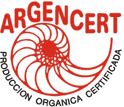ORGANIC NEWS HEADLINES
Thursday 1st June, 2006 - Edition 65
INDUSTRY NEWS: New Resource: Organic Agriculture, A Global Perspective
A much awaited publication, Organic Agriculture: A Global Perspective written by Paul Kristiansen, Acram Taji, and John Reganold, and their international group of contributors,
scientifically reviews key aspects of organic agriculture. At the intersection of research, education, and practice, the contributors look at the organic agricultural movement’s successes and
limitations.
The first half of the book critically evaluates the agricultural production of both plants and livestock in organic farming systems. All major aspects of organic agriculture are explored, including
historical background and underlying principles, soil-fertility management, crop and animal production, breeding strategies, and crop protection. This global and comprehensive overview also
addresses the economic, social, and political aspects of organic farming. These include economics and marketing; standards and certification; environmental impacts and social responsibility; and
research, education, and extension.
Researchers, teachers, extensionists, students, primary producers and others around the world who are interested in sustainable agriculture will find this book to be a valuable and reliable
resource.
The book is available for purchase in hardback for $150 from CSIRO Publishing at www.publish.csiro.au/nid/21/pid/5325.htm
AGRIBUSINESS:Demand for Organic Meats Outpacing Supply
May 22nd 2006
London – Organic meat sales continue to surge in North America with 51% growth registered in 2005.
New research finds the meat sector to be the fastest growing in the North American organic food industry. Organic meat sales have expanded by over 150% since 2002 with high growth rates expected to
continue as retail distribution increases.
Exceptionally high demand for organic meats has been observed since the first cases of BSE were reported on American and Canadian herds in 2003. Although the BSE incidents have not eroded consumer
confidence in beef products, they have elevated consumer awareness of organic meat production methods. Organic beef sales in the US have doubled each year since 2003 partly because of this new
consumer awareness of organic meats.
A new study by Organic Monitor finds undersupply to have a dampening effect on market growth rates. Producers cannot find enough organic meat supply to meet burgeoning consumer demand with some
companies resorting to imports. The US market for organic meats has become highly import dependent with organic meats coming in from Latin America, Australasia as well as Canada. Over 60% of the
organic pork sold in the US is currently imported because of low domestic production levels.
Supply shortages are mostly affecting the organic beef and pork markets. Low producer interest in these organic meats has been due to high production costs, lack of certified slaughterhouses &
meat processing plants, and inadequate distribution infrastructure. Although organic meat production has stepped up since 2004, supply is expected to lag demand for a number of years with imports
continuing to meet the shortfall in domestic supply.
Although the organic beef market is the fastest growing, poultry comprises most organic meat sales volume. Roughly 26,000 tons of organic poultry was sold in 2005 with chicken comprising the bulk.
Its domination is because of the short production cycle which enables producers to adapt relatively quickly to demand fluctuations.
Exceptionally high market growth rates are attracting new entrants in the organic meat industry. Natural & conventional meat companies are taking up high market share as they utilize their
distribution networks to launch organic meats. In contrast, many dedicated organic meat companies are finding it difficult building supply chains from farmers to retailers because of supply
problems. Indeed, the lack of distribution infrastructure makes direct marketing an important channel for many producers.
Small-scale production and undersupply have made organic meats in US and Canada some of the most expensive in the world; organic beef and pork products are priced up to three times as much as
conventional meat products. Retail prices are expected to go down as more supply becomes available, enabling companies to achieve economies of scale in production and marketing.
More information can be found at http://www.organicmonitor.com/300244.htm
Australian Export Market:
Alister Ferguson is Marketing Manager of Organic Meat Company, a subsidiary of ACO certified meat exporter Sanger Australia Pty Ltd. He believes Australia is well positioned to take advantage of the growing demand for organic beef in the USA as we can supply 100% grass-fed range reared organic beef in steady volumes 12 months of the year. He says the USA is up to 10 years off being able to do this as they are geared more towards grain fed programs and have bred their cattle for this purpose.
"Australia on the other hand has worked hard on developing breeds that can be finished on grass, also our cost of production is a lot lower when comparing land values etc," he said.
"However, due to the small supply of good quality NOP certified organic cattle in Australia, to take full advantage, we as processors and marketers have had to work closely with our producers so that we can offer a 12 month supply of quality product which is what is required to tempt the big users in the USA to stock and promote our product in their stores."
Australian Certified Organic, the BFA's certifying arm, offers USDA certification, which will help enable Australian organic farmers to enter the booming US market. For information contact Livestock Officer Chris Hurwood on 07 3350 5706, chris.hurwood@bfa.com.au or visit www.aco.net.au.
ENVIRONMENT:
UK: Ecology Replaces Price for Winning Shopper's Loyalty
Extract from the article published in the Guardian, May 18, 2006
For years the supermarkets' main battleground has been price: "every little helps", "everyday low prices", "value to shout about" and "Asda price" have
been their cries. But in recent months they have found a new territory to tussle over: the environment.
All the big chains are engaged in a battle to prove their green credentials and portray themselves as caring, sharing protectors of the planet. Last week Tesco unveiled a 10-point plan to change the image of the monster grocer into that of a "good neighbour". Items ranged from sponsoring mass running and walking events to erecting wind turbines on store roofs.
Last year Asda and its Wal-Mart parent made a $500m commitment to testing out new environmental technologies and a range of long-term environmental goals. Wal-Mart president Lee
Scott promised the chain would be supplied 100% by renewable energy, create zero waste, help restore balance to climate systems, reduce greenhouse emissions and cut dependence on oil.
Wal-Mart has given itself four years to reduce the carbon footprint of all its new stores worldwide by 30% and a seven-year target to cut the carbon footprint of its entire chain of 6,000 stores by
20%.
This year Mr Scott gained a two-hour audience with Prince Charles to gain royal advice on how to become more ecologically sound.
What is driving the determination to be clean and green? Some retail analysts believe Tesco has made a top-level decision to avoid the image problems that beset Wal-Mart in the US, which has been
accused of riding roughshod over its suppliers, staff and smaller rivals.
Chief executive Sir Terry Leahy insists that Tesco's initiatives simply mirror society. Consumers, he said, are becoming increasingly concerned about the environment. "To retain [their]
trust, we must innovate to meet changing needs," he said at the launch of the Tesco community programme. "We have a wider responsibility to society."
Consumers are changing the way they shop, from increases in demand for organic produce to the proliferation of farmers' markets. Where once stores just sold plain bananas, they now offer large,
small, organic, Fair-trade, Costa Rican and Caribbean. Where once there was kitchen roll, there is now bleached, unbleached and recycled. There are endless similar examples.
Sales of Fair-trade-branded products rose 40% last year, and in March Marks & Spencer announced it would replace all of its tea and coffee ranges with Fair-trade alternatives.
Such is the demand for British organic milk that supplies are short. Sainsbury's has responded with a halfway house: conversion milk. It pays dairy farmers a premium for their output while they
are going through the three-year conversion procedure - and shoppers are buying it, at 5p more for every two-litre container.
Fish counters are seeing change as supermarkets sign up to sustainable sourcing. Sainsbury's no longer sells skate and hake. Last year Asda stopped selling North Sea cod and called for its
waters to be declared a marine conservation zone. This year Asda joined the round table on sustainable palm oil, with Friends of the Earth.
Sir Terry denied Tesco's initiatives are connected to the Competition Commission investigation and a need to improve the group's image. He added: "Whatever the motivation, if you are
looking at the substance, it is substantive."
Tesco has committed £100m to sustainable environmental technology, including solar panels and the gasification of food waste to provide power - twice as much as Gordon Brown set aside for similar
initiatives in his last budget.
Not all the lobby groups are impressed. Andrew Simms of the New Economics Foundation said: "As it stands, the only truly responsible corporate act the big four could do is to ask the regulator
to break them up."
HEALTH: US: Produce has been losing vitamins and minerals over the past half-century
Deborah K. Rich, Special to The Chronicle Saturday, March 25, 2006
The fruits and vegetables that our parents ate when they were growing up were more nutritious than the ones we'll serve our children tonight. On average, the produce we grow in the United
States has lower levels of several vitamins and minerals today than it did 50 to 60 years ago. By growing or buying and eating organic produce, however, we can make up much of the difference.
Organically grown fruits and vegetables are proving to have higher levels of antioxidants, vitamins and minerals than their conventionally grown counterparts.
Donald R. Davis, a research associate with the Biochemical Institute at the University of Texas, Austin, recently analyzed data gathered by the USDA in 1950 and 1999 on the nutrient content of 43
fruit and vegetable crops. He found that six out of 13 nutrients had declined in these crops over the 50-year period (the seven other nutrients showed no significant, reliable changes). Three
minerals, phosphorous, iron and calcium, declined between 9 percent and 16 percent. Protein declined 6 percent. Riboflavin declined 38 percent and ascorbic acid (a precursor of vitamin C) declined
15 percent.
A study of the mineral content of fruits and vegetables grown in Britain between 1930 and 1980 shows similar decreases in nutrient density. The British study found significantly lower levels of
calcium, magnesium, copper and sodium in vegetables, and of magnesium, iron, copper and potassium in fruit.
The report concludes that the declines indicate "that a nutritional problem associated with the quality of food has developed over those 50 years."
The decline in our produce's nutritional value corresponds to the period of increasing industrialization of our farming systems. As we have substituted chemical fertilizers, pesticides and
monoculture farming for the natural cycling of nutrients and on-farm biodiversity, we have lessened the nutritional value of our produce. Integrated well-established organic farming systems can
counter the decline.
Good science comparing the nutritional value of organic and conventional foods is accumulating rapidly. It isn't uncommon for researchers to find that the higher nutrient levels in organic
produce completely offset the declines Davis found in conventional produce. "What all our data shows," says Charles Benbrook, chief scientist at the Organic Center and a former executive
director of the Board on Agriculture of the National Academy of Sciences, "is that whenever there's been a valid comparison between conventional and organic, organic is virtually never
lower than conventional and, in a significant number of cases, it's higher.
Sometimes it's significantly higher in several important nutrients."
For example, Virginia Worthington, a clinical nutritionist who earned her doctorate in nutrition at Johns Hopkins, published a review in 2001 of 41 studies comparing the nutritional value of
organic and conventional produce. After tallying the data across all the studies, Worthington concluded that organic produce had on average 27 percent more vitamin C, 21.1 percent more iron, 29.3
percent more magnesium and 13.6 percent more phosphorous than conventional produce.
Benbrook released a review in 2005 of the research comparing antioxidant levels in conventional and organic foods. In humans, antioxidants reduce damage to cells and DNA from free radicals
(molecules generated by metabolic processes within the body), and thereby promote cardiovascular health, inhibit the reproduction of cancerous cells, slow the aging process in the brain and nervous
systems, and lessen the risk and/or severity of Alzheimer's, Parkinson's and Huntington's diseases. Benbrook found that in 85 percent of the comparable data points, produce from organic
farms had higher levels of antioxidants than did produce from conventional farms. On average, antioxidant levels in organic produce were 30 percent higher.
Earlier this year, a Swedish team of scientists demonstrated that extracts from organically grown strawberries slowed the proliferation of colon and breast cancer cells to a significantly greater
degree than extracts from conventional strawberries did. The levels of all the antioxidants analyzed by the team were higher in the organic strawberries than in the conventional.
"As someone that has been involved with science and science policy for my whole life," says Benbrook, "I think the scientific case has been made for organic produce. The case has
been made firmly enough so that it is appropriate and, indeed, irresponsible at this point not to tell consumers straight up that choosing organic fruits and vegetables probably delivers
nutritional benefits because of the higher levels of antioxidants and vitamins and minerals."
To read the full and extensive article go to
http://sfgate.com/cgi-bin/article.cgi?f=/c/a/2006/03/25/HOG3BHSDPG1.DTL
Deborah K. Rich is a freelance writer and olive rancher in Monterey, USA.
GOOD TASTE: On a Lighter Note.. Dangerous Food
A doctor was addressing a large audience. "The material we put into our stomachs is enough to have killed most of us sitting here, years ago. Red meat is awful. Soft drinks corrode your
stomach lining. Chinese food is loaded with MSG. High fat diets can be disastrous, and none of us realizes the long-term harm caused by the germs in our drinking water. "
"But there is one thing that is the most dangerous of all, and we all have eaten, or will eat it. Would anyone care to guess what food causes the most grief and suffering for years after
eating it?"
After several seconds of quiet, a small 75-year-old man in the front row, raised his hand and said, "Wedding Cake?"
Your Organic Advantage
Editors: Holly Vyner, Dom O'Brien
http://www.bfa.com.au/
Ph: 07 3350 5716 (International +61 7 3350 5716)
AUSTRALIAN CERTIFIED ORGANIC PTY LTD - THE STANDARD IN ORGANICS
http://www.australianorganic.com.au/
















